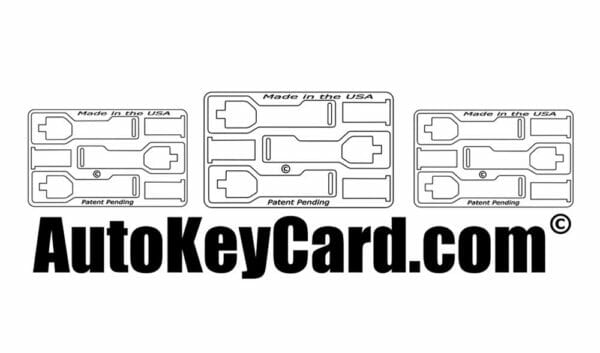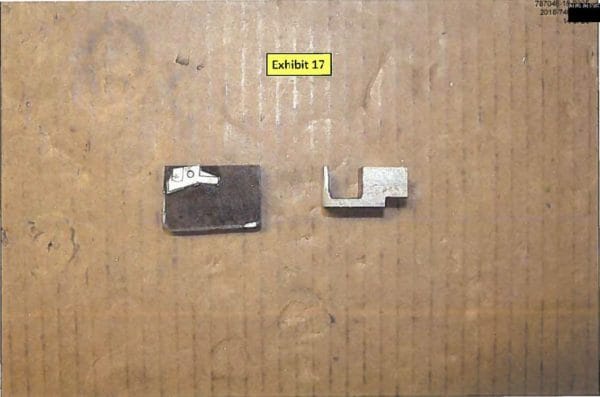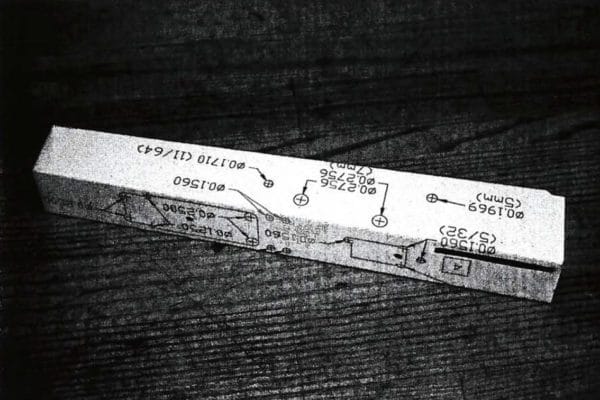Uncovered Documents Should Destroy the Government’s Case in the AutoKeyCard Saga
Washington, DC – -(AmmoLand.com)- Gun Owners of America (GOA) has released multiple documents that torpedo the Government’s case against Matthew Hoover and Kristopher Ervin in the AutoKeyCard case.
In March of 2021, the Bureau of Alcohol, Tobacco, Firearms and Explosives (ATF) agents arrested Kristopher Justin Ervin for selling a credit-card-size metal card with an etching of the outline of a lightning link, a device that, when installed in a semi-automatic rifle, allows it to function like a machine gun. Ervin sold the item as a novelty item through autokeycard.com. Some of the AutoKeyCards featured things such as bottle openers. The ATF claims that the cards are machine guns.
The ATF claims that the cards are machine guns.
The ATF claims that, since the AutoKeyCard had a picture of a lightning link drawn onto the metal, someone in theory could cut out the device, bend it into shape, and use it to convert a semi-automatic AR-15 into a machine gun. The Bureau believes that if a device can be used to convert a firearm into a machine gun, the device itself is a machine gun. Of course, the AutoKeyCard is not such a device, but rather a drawing of a device. It cannot, by itself, be used or installed on a firearm without significant further manufacturing.

At the time that Ervin began selling the AutoKeyCard, he contracted Hoover to advertise the product through his popular YouTube channel, CRS Firearms. Mr. Hoover never sold an AutoKeyCard, but instead simply talked about the cards in videos. Ervin’s company, in turn, sponsored Hoover’s channel.
After the ATF arrested Ervin, seized his website, and charged him with selling machine guns, Hoover started a legal defense fund for the Florida man. Mr. Hoover was able to raise over $60,000 towards the legal bills of his former sponsor. After Ervin’s arrest, Hoover did not advertise the product.
More than a year after Ervin’s arrest, in April 2022, the ATF executed an arrest warrant for Hoover. The ATF claims that Hoover conspired with Ervin to sell lightning links. They further contended, quite audaciously, that raising money for Ervin’s legal defense was part of that conspiracy on the theory that, if Ervin won his case, Hoover would be able to advertise the card again. The ATF admits that Hoover never sold any cards but maintains that, since he promoted the AutoKeyCard, he was also guilty.
The ATF admits that Hoover never sold any cards but concluded that since he promoted the AutoKeyCard, he was also guilty.
After Hoover’s arrest, Gun Owners of America reached out to help with providing him with an attorney and offered to make a financial contribution to the defense. Mr. Hoover turned down the gun rights group’s offer of help and went with lawyers with whom he had previously worked in the past. Hoover’s legal team has filed a motion to dismiss on the grounds that the National Firearms Act (NFA) violates the Second Amendment, based on the Supreme Court’s recent decision in Bruen.
GOA, for its part, continued to work behind the scenes on the details surrounding the Ervin/Hoover case. Even though the gun rights organization is not a part of the case, at stake is something far more significant than just the AutoKeyCard. GOA views the case as the ATF wrongfully using its power, grossly overstepping the definition of “machine gun” enacted by Congress. The group views the ATF’s attempt at prosecuting Hoover as stifling not only gun rights but also free speech.
Through extensive research and use of the Freedom of Information Act (FOIA), GOA believes it has the documentation and reasoning to exonerate not only Hoover but also Ervin by using the Bureau’s documentation and examinations against itself.
GOA has provided this documentation to AmmoLand News for our own independent analysis. Through careful examination and consulting with other legal experts, we can safely say that the documentation is game-changing and shows, based on the Government’s own documents, that the AutoKeyCard falls well outside of being a machine gun
First, in one ATF technical examination discovered by GOA [Page 129, Exhibit 17], ATF reviewed a partially machined part of an “AR-15-type Drop in Auto Sear (DIAS).” The device had a “machined sear mounting body and a small rectangular block of ferrous alloy with a sear template adhered.” This item seems to be a lot like the AutoKeyCard except, in that case, the sear mounting body was already partially machined, whereas the AutoKeyCard is not. Nevertheless, the ATF examined the item and determined it was not a machine gun, and therefore totally outside the agency’s jurisdiction to regulate.

This item seems to be a lot like the AutoKeyCard, except, in this case, the sear mounting body was already partially machined! The ATF examined the product and determined it was not a machine gun.
Nevertheless, the ATF examined the item and determined it was not a machine gun, and therefore totally outside the agency’s jurisdiction to regulate.

The ATF’s internal NFA manual itself might free the pair [page 11]. The NFA manual states that conversion devices are machine guns only if it was “designed solely and exclusively” to be used to convert a semi-automatic firearm into a machine gun. It further states that the part had to be produced for “no other reason than to convert a weapon into a machine gun.”

The manual reads: “Included within the definition of machinegun is any part designed and intended solely and exclusively, or combination of parts designed and intended, for use in converting a weapon into a machinegun. This portion of the machinegun definition addresses what are commonly referred to as conversion kits. The “any part designed and intended solely and exclusively” language refers to a part that was produced for no other reason than to convert a weapon into a machinegun. Illustrated below are examples of such parts.”
Those admissions mean that if Ervin designed the AutoKeyCard for any other reason than a conversion device, then it cannot be considered a machine gun.
Nowhere on the AutoKeyCard website was it ever marketed as a conversion device. It was sold and marketed as a novelty; some were sold as bottle openers. The prosecutors will have to prove that the reason listed on the company’s website was a massive lie and try to prove that they know what Ervin was thinking and moreover that Hoover never viewed the AutoKeyCard as anything but a conversion device.
But there is still more…
Third, GOA has also turned up a series of ATF letters concluding that unfinished firearm and machine gun receivers, with templates fixed, are not regulated
For example, an ATF letter from November 1986 addressing STEN submachine gun tubes with templates attached explains that cutting out the template would allow someone to build a submachine gun with minimum effort, and yet the ATF determined the items are not NFA or GCA regulated. This product is a lot closer to a machine gun than an AutoKeyCard and yet, according to ATF, is not a machine gun. Likewise, the ATF has ruled other firearms with templates attached are not regulated.
GOA has also turned up documents showing AK flats with templates affixed.
The ATF reviewed these and determined these not to be covered under the NFA or GCA. These items are unformed, and even though they have templates, they are not regulated by the ATF. The ATF considers these to be only “firearms parts.” They are regulated only for export.

GOA turned up documents showing an AK flat with a template affixed, and the gun rights group also turned up documentation with AK flats with engravings.
The ATF reviewed these items and stated that these were not regulated under the GCA or the NFA. The AutoKeyCard was just a metal card with an etching.
But there is still more…
Fourth, another document turned up by GOA is an ATF Intelligence Bulletin about “swift-links.” A swift link is another name for a lightning link. According to the ATF Intelligence Bulletin, ATF believes that a swift link becomes a machine gun when it has a template applied and is cut in the “approximate dimensions” of a fully finished swift link. The AutoKeyCard is not cut out and is nowhere close to the dimensions of a fully finished swift link. According to the ATF’s own standard, then, the AutoKeyCard cannot be considered a machine gun.
This document is as close to a “get out of jail free card” as possible.
According to the ATF’s own documents, the AutoKeyCard cannot be considered a machine gun.

GOA hopes that these documents can be of help not only to fight the charges against Mr. Hoover and Mr. Ervin, but to help fight back against ATF overreach in similar cases and matters.
Interested legal teams; all documents can be downloaded on the Gun Owners Foundation FOIA website.
